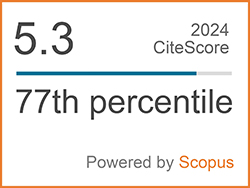Investigation of the Parameters Affecting the Die Failure in High Extrusion Ratio of Aluminium Square Hollow Profile by Using Viscoplastic Finite Element Modelling
Abstract
The increase of the aluminium profile consumption required the efficient manufacturing process in order to support the aluminium profile product and capacity requirement. The life-time of the extrusion die was one of the important factors that could influence the productivity and quality of the aluminium profiles. This paper was the study of the effect of the extrusion speed on the extrusion load, temperature distributions and the stress concentration in the pothole die. The aluminium square hollow profile size 1.7x1.7 inch with the wall-thickness of 0.7 mm was used in this study. The aluminium initial billet was made of AA6063-T5, which has the diameter of 127 mm and length of 508 mm. This process has the extrusion ratio of about 106, which is considered to be extremely high. Viscoplastic Finite Element Modelling (FEM) was employed to simulate the aluminium hot extrusion process and investigate the results. The simulation results demonstrated that the extrusion load and temperature over the whole extrusion process was not uniform, and the die stress analysis could predict the weak area in the porthole die.
Keywords
Refbacks
- There are currently no refbacks.
 Applied Science and Engineering Progress
Applied Science and Engineering Progress







